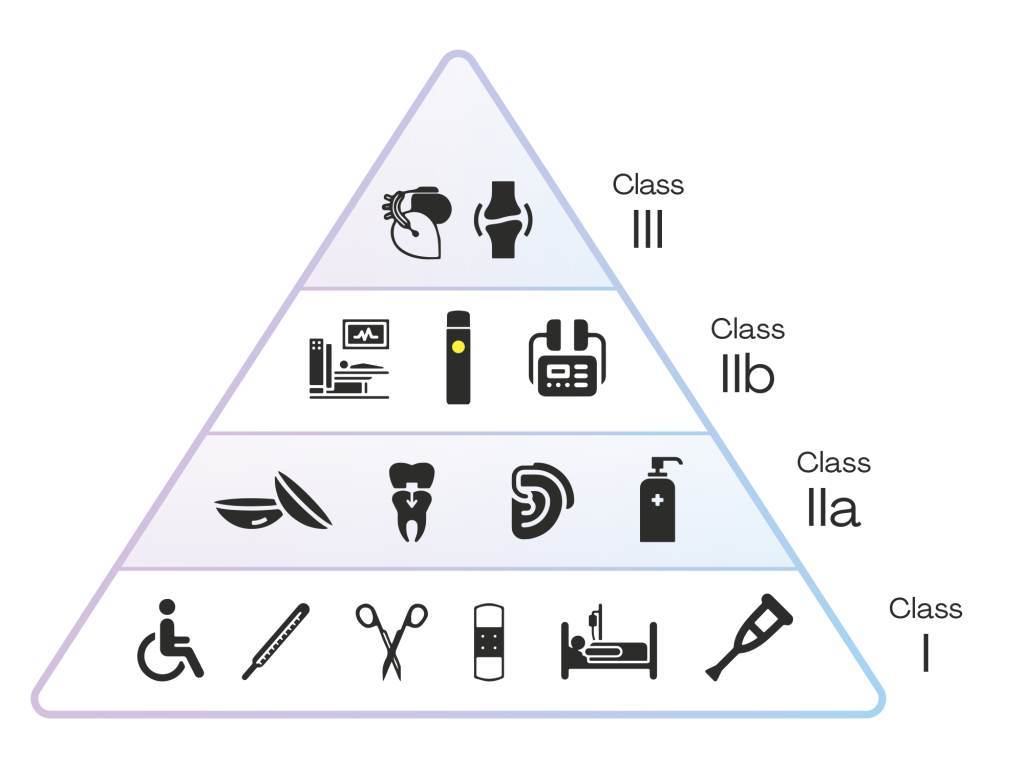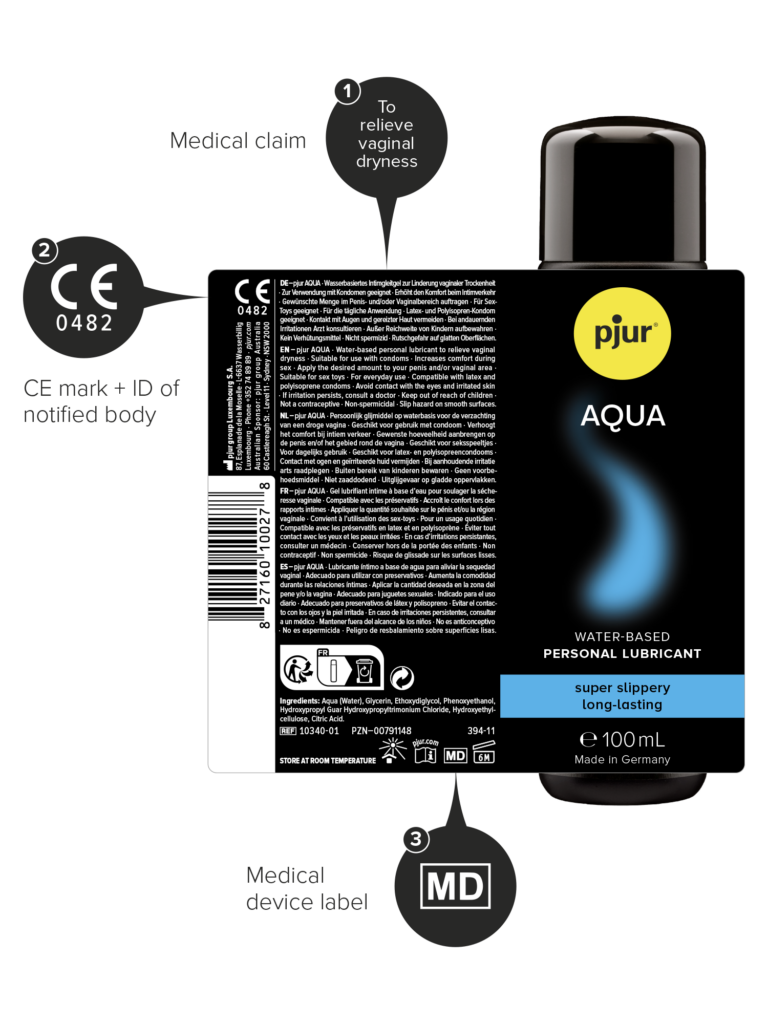Focus Medical Device

Have you ever thought about personal lubricant?
Personal lubricants are a great invention, and really shouldn’t be a taboo anymore. They are an aid for pleasurable sex, without friction, pain or discomfort. Many of us buy personal lubricants from the pharmacy – generally without really looking at the label. Lots of us pay attention to the ingredients and manufacturing conditions for purchases in other areas of our life, such as food or skincare. But with personal lubricants, many of us just grab the first product we see, often one of the cheaper products. So did you know that personal lubricants have been classified as medical devices for a few years now, and from next year they will be subject to far stricter regulation at a European level?
But why is a personal lubricant a medical device?
Not many people know about it, but personal lubricants are facing a dramatic development in the coming months. Due to the new European Medical Device Regulation (MDR for short), which has applied since May 2021, in future personal lubricants will be classified like defibrillators and subject to substantially stricter controls. They are therefore regulated tougher than previously, and must be officially approved. The aim of this new regulation is to establish a standard legal framework for medical devices at a European level and consequently increase safety for users. Many brands will not get this strict but necessary approval, and their products will then no longer be called personal lubricants, creams or gels. They also do not provide the required level of safety, and should no longer be introduced into the body. So, be careful and keep your eyes open when purchasing personal lubricants!
This regulation was passed at European level after the French company Poly Implant Prothèse (PIP) used industrial silicone for breast implants in 2012. Thousands of women were given low-quality implants, that contained harmful ingredients. Unlike with medical devices, at that time there was not an adequately regulated approval procedure for products like breast implants or even personal lubricants. For these Class I medical devices, only the CE mark and a kind of background manufacturer documentation was necessary, which didn’t have to be checked using a “conformity assessment procedure” at that time. The 80 or so notified bodies across Europe usually carried out checks on request and with prior notice. The required “clinical assessment” was carried out by PIP itself, and misled the auditors, leading to low quality products reaching the market.
Classification of medical devices
Medical devices are divided into four risk classes. This classification is based on area of application, duration of application, anatomical position and the resulting application risk, among other things. The classification ranges from no risk to high risk and potential danger.

Class I
Class I devices are a low risk and do not require approval by a notified body. This covers devices such as reading glasses or support stockings.
Class IIa
Class IIa devices have a medium risk, while Class IIb devices have an increased risk. Manufacturers need an EU certificate of conformity, also known as a “CE certificate” in order to give both classes the CE mark and bring them onto the market. Class IIa devices include syringes for infusion pumps and ultrasound devices.
Class IIb
Class IIb devices include products that are partly or completely introduced into the body, and require high safety standards because they are important for users. They demonstrate a higher risk than the IIa products or devices. This includes infusion pumps, ventilators, some defibrillators, personal lubricants and condoms.
Class III
Next is Class III, which covers products and devices that are directly introduced into the central circulatory or nervous system, such as pacemakers or prosthetic heart valves.
You only understand the importance of regulating personal lubricants once you realise the effects Class IIb devices have on the body and the high potential danger they are ascribed by the MDR (European Medical Device Regulation). Think about it: personal lubricants are introduced into the body and therefore need to meet the highest standards in order to guarantee user safety.
Why is this important for you?
Firest and foremost: SAFETY.
Because personal lubricants are introduced into the body, they require the highest safety standards.
Therefore, from 2024 personal lubricant manufacturers must pass the MDR (European Medical Device Regulation) if they want to continue to produce and sell products under the category personal lubricant or cream. Only these approved products meet the high requirements of a Class IIb medical device, and only they offer you safety for your body.
External use only: COSMETIC.
Products that are not MDR compliant may no longer be sold as personal lubricants from 2024. Similar products that are sold as cosmetics are only designed for external use.
According to the Federal Office of Consumer Protection and Food Safety, these products are designed to clean or perfume the body, change its appearance, protect the body, or influence the body’s smell.
Everything that you introduce into your body should meet the highest standards, and MDR-certified products give you precisely this certainty. In the quality of our products, we make no compromises and have been relying on the certification of our products for years. Therefore, we are among the first and few lubricant manufacturers to have MDR certification. But we don’t just talk about it; we also provide our certifications – completely transparent. Click here to access the certification.
When it comes to cosmetics or even food, most of us pay attention to ingredients, test approvals, or the origin of components and other claims. We place great value on quality, so why shouldn’t the same go for personal lubricants? Because: Only the best for you and your body!
How can you recognise an MDR-compliant personal lubricant?

Medical claim:
There must be an explanation of the intended use. This includes statements like “for everyday use”. Secondly, there should be statements of compatibility with other products, for example compatibility with condoms. A label must also have mandatory warning and safety information. This includes statements like “Avoid contact with the eyes and irritated skin”.
CE mark + ID of notified body:
The CE mark indicates compliance with European standards for medical devices. The ID number of the notified body guarantees that the product has been subjected to strict conformity assessments and checks by an officially notified and monitored organisation. You can therefore trust that are our personal lubricants meet the highest standards and are safe to use.
Medical device label:
The MD (medical device) is a clear sign: This product is an officially recognised medical device. The medical device label indicates that our personal lubricant meets the strict standards and requirements for medical devices. You can be sure that it promises not just a sensual experience, but also satisfies the highest medical quality requirements.






